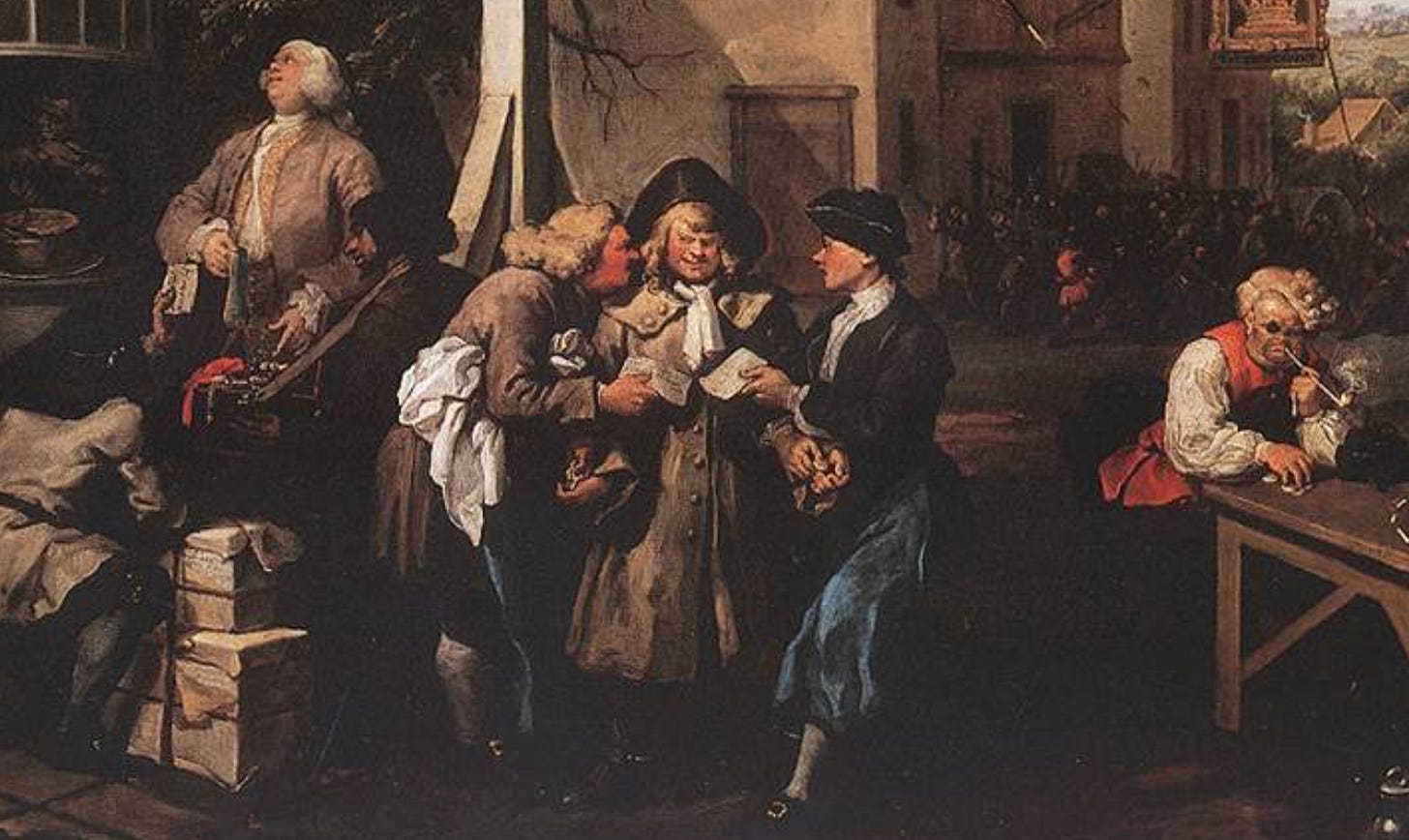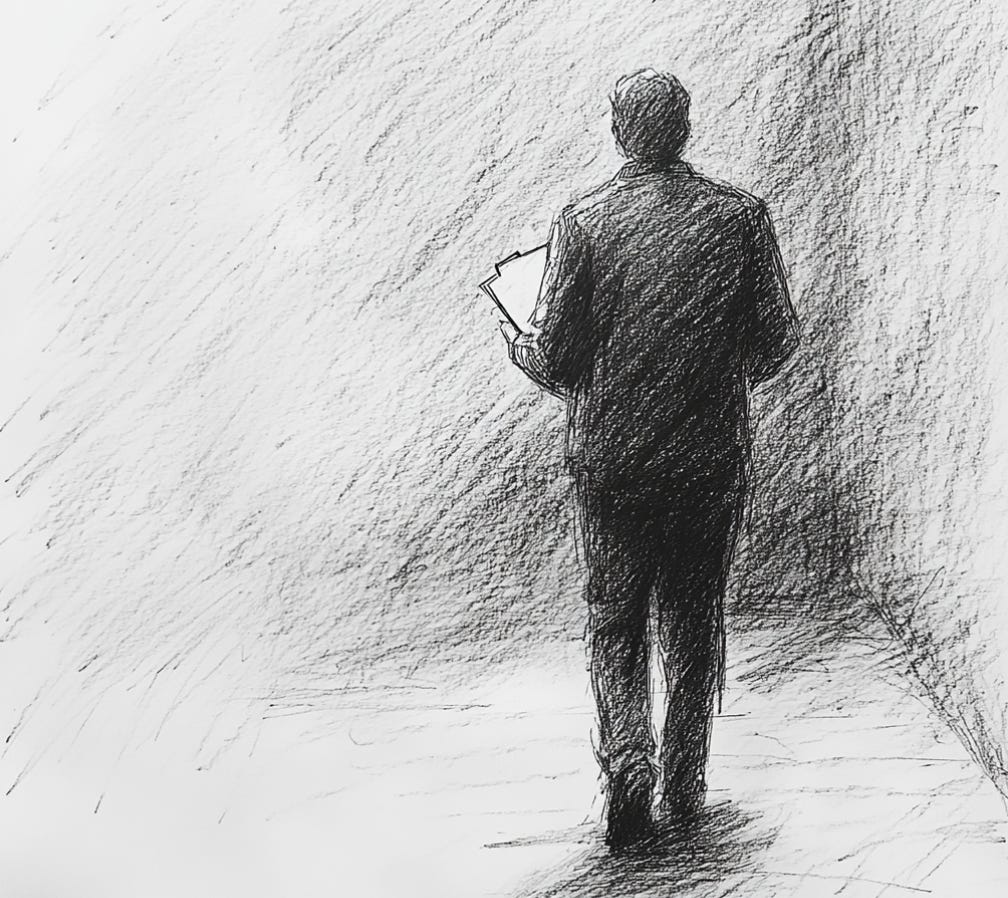I stood nervously before the wooden door.
Listening to the footsteps approach my knock, exposed before the front-porch entrance, I held my clipboard at my midriff like a shield.
The door cracked open.
Eyes blinked out, squinting in the harsh glare of afternoon. I smiled, opened my mouth, and in my most friendly tones, asked a stranger to vote.
I’m no expert canvasser. Nor can I claim to have spent enough time knocking on doors to have made an impact in any election. But I can say that if you’ve never experienced the exhilarating, terrifying, fundamentally good-for-the-soul experience of walking around and asking neighbors to vote, you’re missing out.
Walking from door to door, ambling along sidewalks, stepping down paths to front doors, trodding up stairwells to apartments. In theory, canvassing helps turn out voters. In practice, it consists of innumerable micro-interactions between strangers in a way that’s only possible in a civil society.
Walking has long been at the center of north Atlantic liberal democracy.
Pedestrian distribution of pamphlets was central to the spread of revolutionary ideas in both the English and American revolutions. As elections in England became more openly contested in the late seventeenth century, winning office meant finding voters and persuading them, often through food and drink.1

Across the Atlantic, the first expansions of the American electorate occurred on foot. Jacksonian political activists walked through towns and rural areas, advocating for populist ideas in door-to-door canvassing.
In the cities, political machines like Tammany Hall, dominated urban politics by the late 19th-century through pedestrian operations. Ward bosses walked through neighborhoods to connect directly with voters, shaking hands and offering jobs or assistance in exchange for votes.
Walking, marching, street conversation all helped knit democracies together. James Vernon, historian of modern Britain, has argued that modernity was an assembly of distant strangers, wherein rapid population growth combined with increasing mobility to bring people together across vast distances into urban concentrations. Humans—tribal, violent animals, prone to spiritualist presumptions—were thrust together in new and combustible ways. The mass politics to govern this was partly formed on foot.2

These days, canvassing doesn’t get much attention, even in this moment of populist fever.
We fixate on polling, debates, and digital interactions. This year, an entire news cycle covered how candidates targeted voters on podcasts with names like “Who Ate My Face?,” “Dingus Hotline,” and “The Veo Von Claptrap Show,” none of which you’ve heard of but all of which apparently have 30 million subscribers.
You’ll never package canvassing into a punchy headline or podcast episode. And yet the experience reveals much about the nature of politics in our era.
In 2016 I convinced two of my grad-school buddies to join me for a trip to Reno, Nevada to canvass voters. Reno was the closest city, in the closest swing state. So we piled into my Honda and sped east on Election Day, stopping only for a pee break at Donner Pass before the long slide down Interstate 80 into the Nevada desert.
After gathering a voter list at a precinct, affixing a few official-looking campaign stickers upon our chests, we headed to our assigned area.
The first spot was a vacated suburb. Granted it was a weekday, but there was an eerie emptiness to the neighborhood. Every house shadowed, garage doors fastened against the arid sky. Gentle gusts tumbled desert dust over the asphalt.
We knocked on door after door. Few were answered. Occasionally, we heard sounds from within, perhaps someone looked through the peephole before ignoring us.
Some doors opened.
At one, a young man greeted us, standing in the angle of the entrance. We said hello, and as we started our voting pitch, a stench hit us. A smell of protein gone deeply foul, emanating from the house, of something festering in an oddly human variety of rot. We quickly retreated when the man told us he planned to vote later that day.
As we walked away I asked, looking over my shoulder at the house, “Is there . . . is there something dead in there?”
My friend thought for moment. “No, I think it was the smell of neglected people.”
We walked silently and continued to the next house.
Out next canvassing area, a working class neighborhood, was more lively. We walked over dusty yards. We walked past dogs snarling behind fences. Music rang out from apartments. Mothers greeted us, babies on hips. At one door, a child on the verge of adolescence gazed at us with insolence when we asked if his parents were home. “Working.” And then he shut the door and turned up the stereo.
We were, admittedly, a bit depressed when we returned to the precinct office to grab more names.
“Everything’s taken,” said one of the supervisors. Polling stations would close soon. “Oh wait, there are a few homes east of town we’ve not hit yet today. Want to head out there? You’ll have to hustle.”
The sun was setting as we arrived and parked at the subdivision. We studied the half-dozen addresses on our voter list and began: a couple empty houses and few already voted.
We stepped up to the final house, a modest bungalow. A younger woman answered, and when we inquired about the person on our list, she yelled into the house, “Ma! People for you.” She herself had already voted.
An older woman, stepped to the door uncertainly. Had she voted? Not yet. Her polling place was a half mile away and closed in 15 minutes. Could she leave now? If she got in line, they couldn’t turn her away.
“Yes, well. Dinner is cooking.”
We gentle cajoled. And her daughter said softly, “C’mon, ma. I can finish the food.”
“I’ll think about it,” she smiled at us.
We thanked her and walked, groaning back to our car. The polls closed in minutes. Perhaps we’d wasted our day.
Then back up the street, we saw the woman, our voter, getting into a car. She waved at us, as she drove by, heading toward the polling place.
We high-fived in the twilight. A vote for democracy.
We sat down heavily, tired, plunking into the Honda. Driving along the desert wastes east of town, the last purplish whispers of light faded on the hillsides. In a few hours the world would turn upside down, but for a moment, as the day faded over the Sierra, it felt like we’d made a difference.
Helping get out the vote doesn’t have to be a big to-do. Relational organizing, conversations encouraging friends and family, can increase the likelihood of someone voting by up to 17%. You can find resources about how to have those convos at the League of Women Voters, the NAACP, and Vote Save America. Hat tip to my friend Erica Lee for sharing these resources.
Tweets of the week
That’s it for this week. Thanks for reading. To support Footnotes, consider upgrading your subscription.
Until the 17th century, English parliamentary elections were generally not contested. But even as electoral contests grew more frequent, canvassing was controversial. Persuading voters was often seen as a violation of free elections wherein voters should make up their own minds. Swaying of votes could consist of tenurial pressures on tenants, entertainment through alcohol or bribes, or informal appeals through parades and chairing. See Derek Hirst, The Representative of the People?: Voters and Voting in England Under the Early Stuarts (Cambridge: Cambridge University Press, 2005), 111-121.
The British abolitionist movement, an early instance of liberal-style democracy, amid the gained momentum from citizens walking door-to-door across Britain. Protest marchers catalyzed anti-slavery efforts on both sides of the Atlantic.













…what do you think of the idea of making voting mandatory to citizenship?…something akin to needing a driver’s license to drive?…i’d be so curious to see the results of elections with 90+% participation…